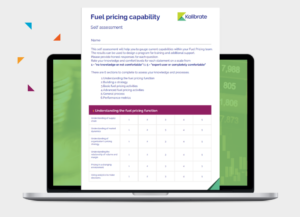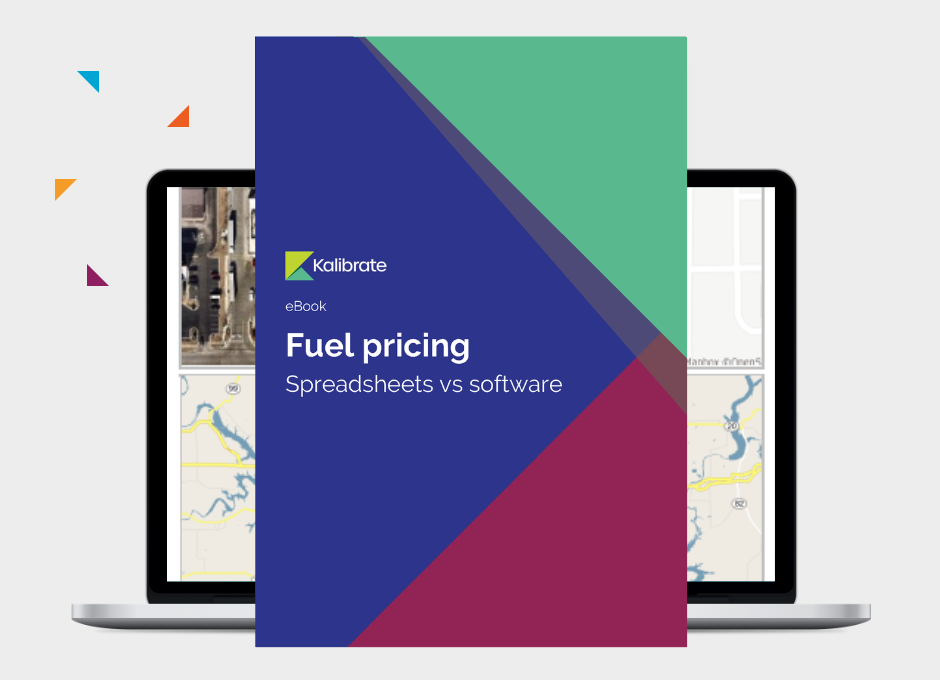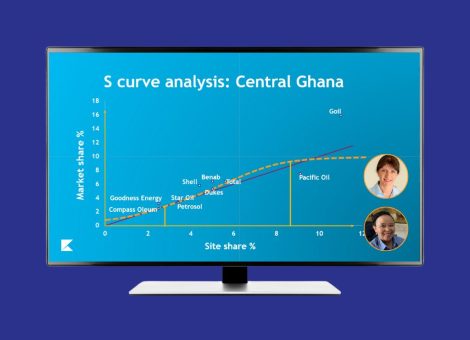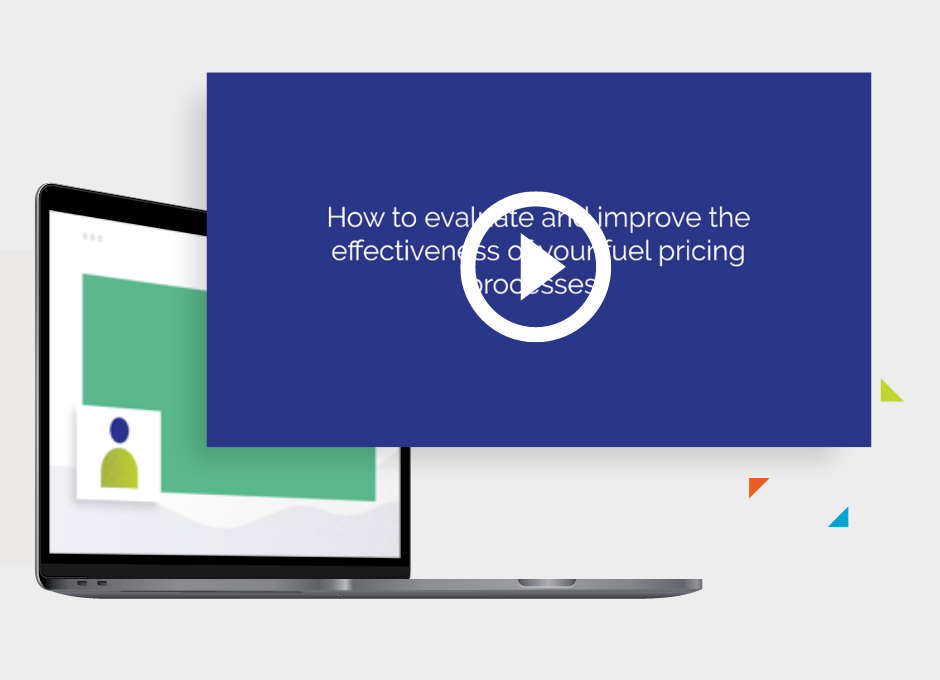The benefits of adopting software in the fuel pricing function
Efficiency of fuel pricing software compared with spreadsheets
For implementing a simple pricing strategy, such as “Competitor price + 1c”, a spreadsheet will be entirely capable of calculating acceptable prices for each site. We’ve seen many cases where far more complex pricing strategies have been applied using Excel — but regardless of how simple or complex your strategy is — Excel isn’t capable of implementing it efficiently.
And in a fast-moving market like fuel retail, efficiency is essential. Read how one customer boosted profitability 4% and increased their market share from 9% to 12% using Kalibrate’s fuel pricing software.
Data entry into spreadsheets is often input by hand, taking time and increasing the chances of errors. Once calculated, prices are manually checked and sent via SMS or emailed over to sites to be entered into POS and signage systems. On a small scale, this process is fine. But if your organization has growth targets and plans to build or acquire new stores, it can quickly get out of hand.
Fuel pricing software allows you to ingest data from different channels automatically. It can immediately calculate a new price (based on rules and criteria set by the Pricing team) and automatically send it to a store’s POS system — making the entire process streamlined, repeatable, and fast.
Rapidly implementing prices through POS integration improves profitability and increases the likelihood of hitting volume and margin targets. For some fuel retailers, implementing price changes can take hours, and a verbal confirmation from a store manager is all they have to trust that prices have taken effect. Prices hitting pumps hours after they have been submitted only result in fuel retailers missing out on revenue due to lack of speed.
Fuel pricing software allows pricing decisions to be made by responsible team members regardless of their location. Many international organizations successfully manage fuel pricing for entire networks from one central office. With efficient data ingestion, quick decisions, and automatic implementation — the software allows Fuel Pricing Managers more control and visibility over their networks.
Whether you are pricing for a far-reaching global network or a smaller localized market — increased visibility and control benefit every pricing team.
Fuel pricing software saves time by eliminating the need for duplicate efforts, which is often the case when using spreadsheets. Many fuel pricing teams have multiple spreadsheets to keep track of different calculations and historical records. And as a result, the same data is entered numerous times in different places, which is not the best use of anyone’s time and increases the risk of human error.
Accuracy of data entry
With any software system, your results are only as good as the data you put in. So, ensuring that you have accurate, quality data is required regardless of whether you use spreadsheets or software. However, the manual nature of spreadsheets leaves them more at risk for human error — and in this industry — mistakes can be costly.
A sound fuel pricing software system’s automated processes reduce the likelihood of errors and carry out checks and validations to quickly spot discrepancies before any prices are sent, protecting you from expensive mistakes.
 The Fuel Pricing self-assessment checklist has been designed by our team of experts to help you gauge your current internal fuel pricing capabilities across your team. Across six primary audit areas, the checklist will help identify opportunity areas for improvement and highlight any weaknesses that could be slowing your overall growth strategy.
The Fuel Pricing self-assessment checklist has been designed by our team of experts to help you gauge your current internal fuel pricing capabilities across your team. Across six primary audit areas, the checklist will help identify opportunity areas for improvement and highlight any weaknesses that could be slowing your overall growth strategy.Security and stability of a fuel pricing software platform
Although not always at the forefront of your minds, the security and stability of your chosen fuel pricing system are vitally important.
Who has access to your pricing system? Who can change prices or alter your pricing strategy?
With spreadsheets, your access levels are all or nothing. Anyone with access to your spreadsheet can change data fields, adjust calculations, and affect prices, leaving you vulnerable to unwanted changes. Fuel pricing software allows you to set roles and responsibilities for different users, giving you more control over pricing changes.
The more complex a spreadsheet becomes, the more likely it is to break. And an anomaly in the data, an incorrectly formatted cell, or a broken formula can take hours to find and fix — putting you behind your scheduled price changes and risk losing revenue.
Accountability amongst team members
The lack of access restrictions has additional implications. Without an audit trail, people cannot be held accountable for changes within the spreadsheet. Mistakes can’t be traced back to the person who made them, so it’s impossible to identify if errors are genuine or the result of a broken training process. With software, audit logs provide an additional level of confidence. Managers can see who has implemented changes, and team members know they are accountable for their adjustments, encouraging everyone to follow the agreed processes.
Who is responsible for the spreadsheet itself?
Spreadsheets are usually owned by one team member who is the “holder of all knowledge,” so if something goes wrong — they are the ones to turn to. But who is accountable for managing the sheet and pricing your network if that person isn’t available?
Purpose-built fuel pricing software will give you access to a support team and a wider team of developers and testers responsible for keeping the system working as expected.
Visualization of data outputs
Spreadsheets have a range of charts and data visualization options — but the data itself is often disparate, held in multiple different areas, and difficult to read — making it hard to view the information you really need to draw conclusions, or to quickly provide an “at-a-glance” overview of your situation at any given time.
Purpose-built Fuel Pricing software will give you access to charts and other visual widgets like maps so you can visualize your data in the most appropriate ways. Customizable dashboards allow you to bring all the data you need into one single view to help you easily make actionable decisions and report on them — enabling you to work with clarity, confidence, and speed.
Development of a platform
It takes time to build a useable spreadsheet process, and we have seen examples of really complex strategies executed from spreadsheets. Once built, it’s a static sheet that will only change if you change your strategy. It will work, but it will never improve.
Software is supported by development teams who work to make incremental improvements that ensure your system becomes more sophisticated over time. So the improvement of your pricing processes isn’t solely reliant on improving your strategy. Also, the software itself can introduce new pricing opportunities that keep you ahead of the competition.
Considering the switch from spreadsheets to fuel pricing software and want some next steps?
If you’d like to read more about the benefits of fuel pricing software, and the considerations you should be thinking about before you switch away from spreadsheets, download our helpful eBook: Fuel pricing: spreadsheets vs software today.
If you’re ready for expert advice on whether fuel pricing software is right for your organization, reach out to our team for a personalized consultation to walk through your current processes, and see where opportunities for optimization exist.
 In this eBook, we examine the issues that spreadsheets can cause for Fuel Pricing teams and the wider fuel retail organization, as well as the considerations you need to make if you are considering switching to a fuel pricing software system.
In this eBook, we examine the issues that spreadsheets can cause for Fuel Pricing teams and the wider fuel retail organization, as well as the considerations you need to make if you are considering switching to a fuel pricing software system.- The benefits of software – and why spreadsheets aren’t redundant
- The considerations your team need to make when thinking about the switch
- A checklist of questions you should ask of any potential technology partner
Read more articles about:
Fuel pricingRelated Resources
Fuel pricing
Fuel pricing by exception: When do analysts actually analyze?
Managing fuel prices can be time-consuming, especially when analysts spend much of their day on routine tasks....

Fuel pricing
Middle East / Africa - Fuel network planning: Critical insights
Join our team as we look at the key points of insight that fuel network planners need to consider when making...



